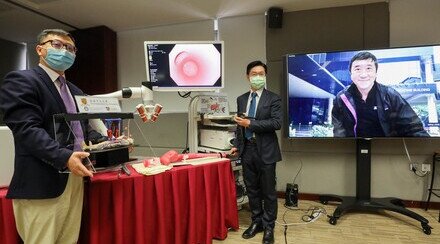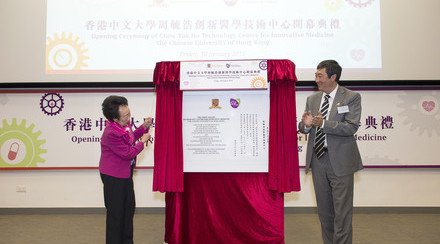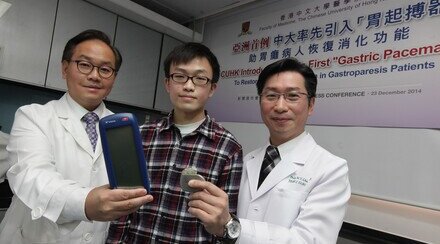CUHK Successfully Performed Hong Kong's First Robotic Endoscopic Scarless Surgery - A Major Endoscopic Technological Breakthrough
Gastrointestinal (GI) cancers are the most common cancers worldwide. According to WHO cancer statistics, gastric and colorectal cancers are respectively the second and third most common cause of cancer related deaths, which amount to 1,500,000 deaths per year globally. While advanced GI cancers are difficult to cure, early GI cancers carry a significantly better prognosis. The 5-year survival for GI cancers at an early stage is more than 90% worldwide.

(from left) Professor Philip Wai Yan CHIU, Professor, Department of Surgery and Director, CUHK Jockey Club Minimally Invasive Surgical Skills Centre, CUHK; Professor Lawrence Khek Yu HO, Professor and Head, Department of Medicine, Yong Loo Lin School of Medicine, National University of Singapore.
Conventional treatment for GI cancers is surgery, which involves resection and anastomosis, and carries a significant risk of morbidity and mortality. Endoscopic submucosal dissection (ESD) is a novel technique for treatment of early GI cancers. It can achieve a curative resection for early GI cancers limited to mucosa with wide margins. Comparing to conventional surgery, ESD is less invasive because the endoscopic procedure does not perform through open wound. Thus, postoperative pain will be substantially reduced. Furthermore, ESD renders the patient a better quality of life as the organ that carries the cancer is not resected.
The Department of Surgery at The Chinese University of Hong Kong (CUHK) has been the first to perform ESD in Hong Kong for the treatment of early gastrointestinal cancers since 2004. Currently, 276 patients received treatment of their early GI cancers by ESD. The primary success of ESD is more than 95%. These included patients with 109 (39.5%) early neoplasia or submucosal tumors in the stomach; 38 (13.8%) early neoplasia in the esophagus; 5 (1.8%) in the duodenum; 124 (44.9%) in the colon and rectum. The average operating time of ESD was 99.1 minutes. The average size of specimen resected was 17.8cm2, with the largest being 52cm2. The average hospital stay was 4 days and there was no perioperative mortality.
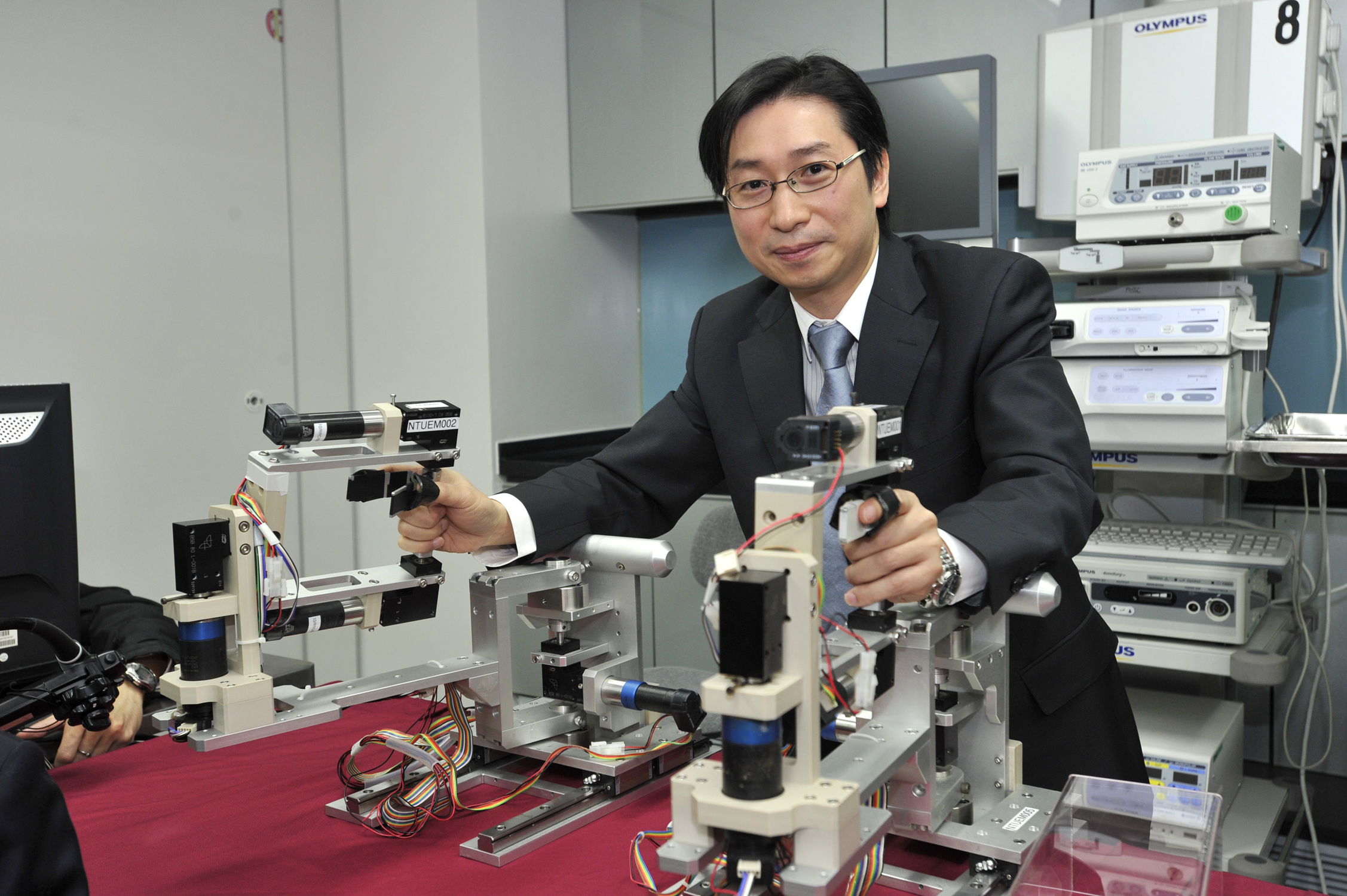
In collaboration with the researchers from Singapore, Professor Philip Wai Yan CHIU of Department of Surgery at CUHK performed the first two cases of Robotic assisted ESD for the treatment of early gastric neoplasia in Hong Kong.
One of the major difficulties in performing ESD is the lack of tissue retraction. Most operative time was spent to maintain a good view of the submucosal plane while moving the endoscope with the ESD instruments for dissection. The design of traditional endoscope allows only single degree movement, which makes ESD difficult to learn and perform. A novel Robotic Endoscope platform is developed in collaboration with National University of Singapore and Nanyang Technological University of Singapore. The system serves as the latest advances in robotic technology, with newly designed delicate robotic arms attached to the ordinary endoscope to facilitate the performance of complex endoscopic surgery by extending the degree of movement through the two robotic arms.
In collaboration with researchers from Singapore, CUHK performed the first two cases of Robotic assisted ESD for the treatment of early gastric neoplasia in Hong Kong. These are among the first five cases of Robotic assisted ESD performed in human around the world. The operations were successfully performed under general anesthesia, and the operative time was only 66 minutes in total. The patients were allowed to eat one day after the procedure.
In conclusion, in collaboration with National University of Singapore and Singapore Nanyang Technological University, CUHK has achieved a major technological breakthrough and completed the world first human case series of Robotic assisted ESD.
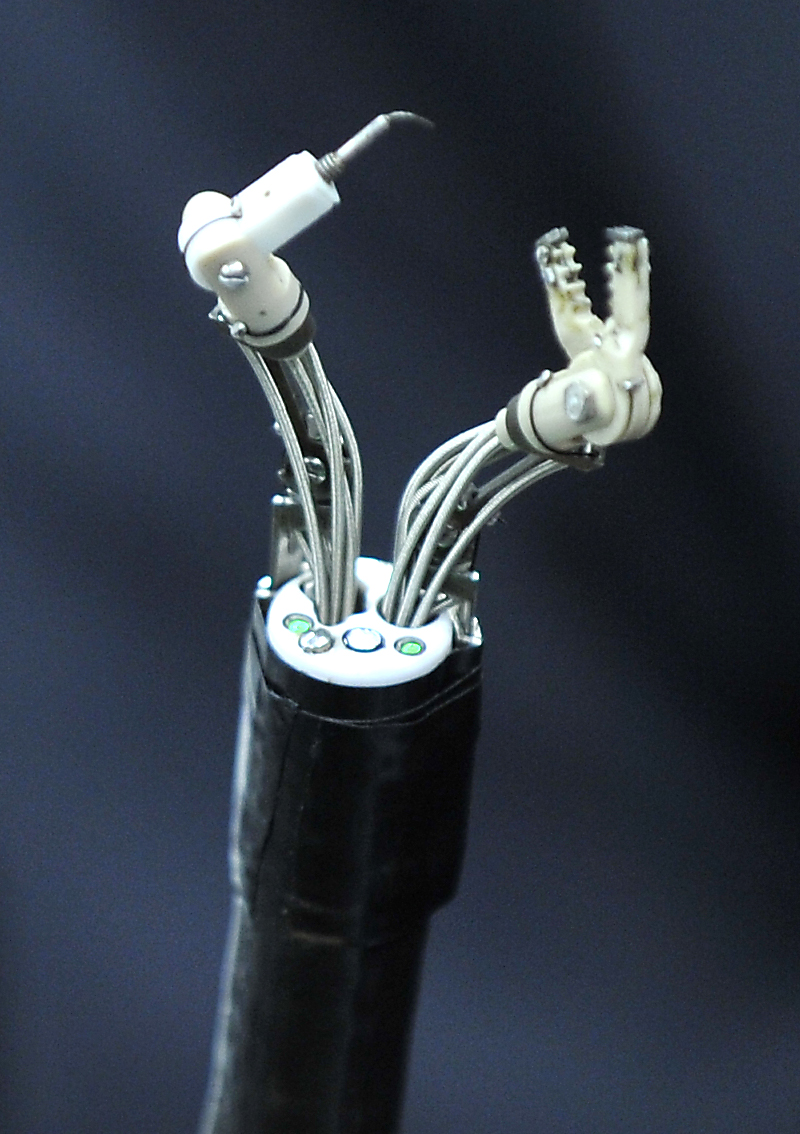
The newly designed delicate robotic arms attached to the ordinary endoscope can facilitate the performance of complex endoscopic surgery by extending the degree of movement through the two robotic arms.














